Ms. Kennington
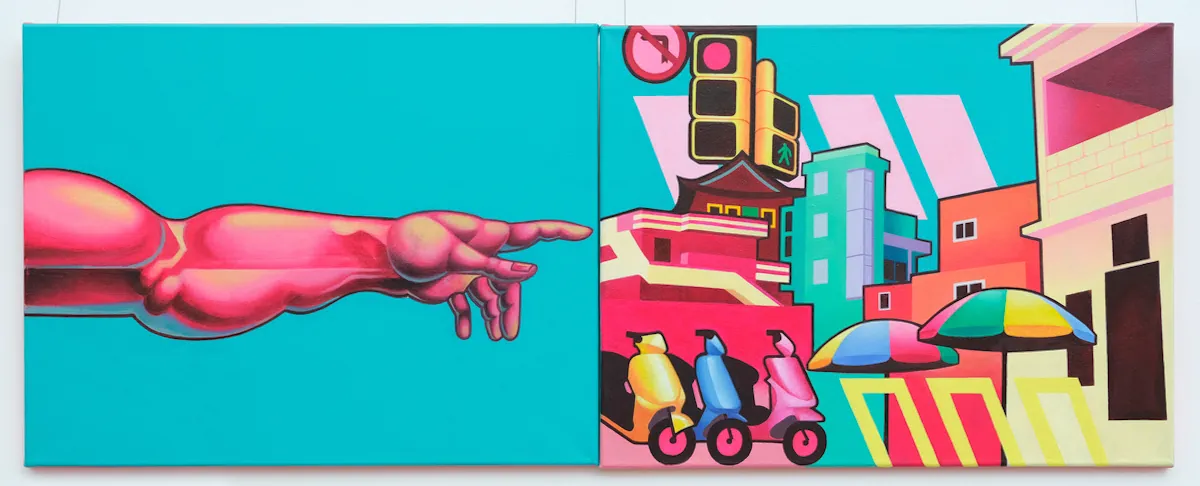
Creations of Adam
Oil and acrylic on canvas
This transcription piece aims to convey that everything artificial is a testament to humanity’s power. The pointing hand reflects God’s hand from Michelangelo’s ‘The Creation of Adam’, but mirrored vertically. It is now the hand of Adam - humanity - mimicking God. The bright colours make the piece toy-like, signifying our vision of beauty during our childhood. The work is separated into two pieces, symbolising how easily people see only an object, not a creation, and devalue it.
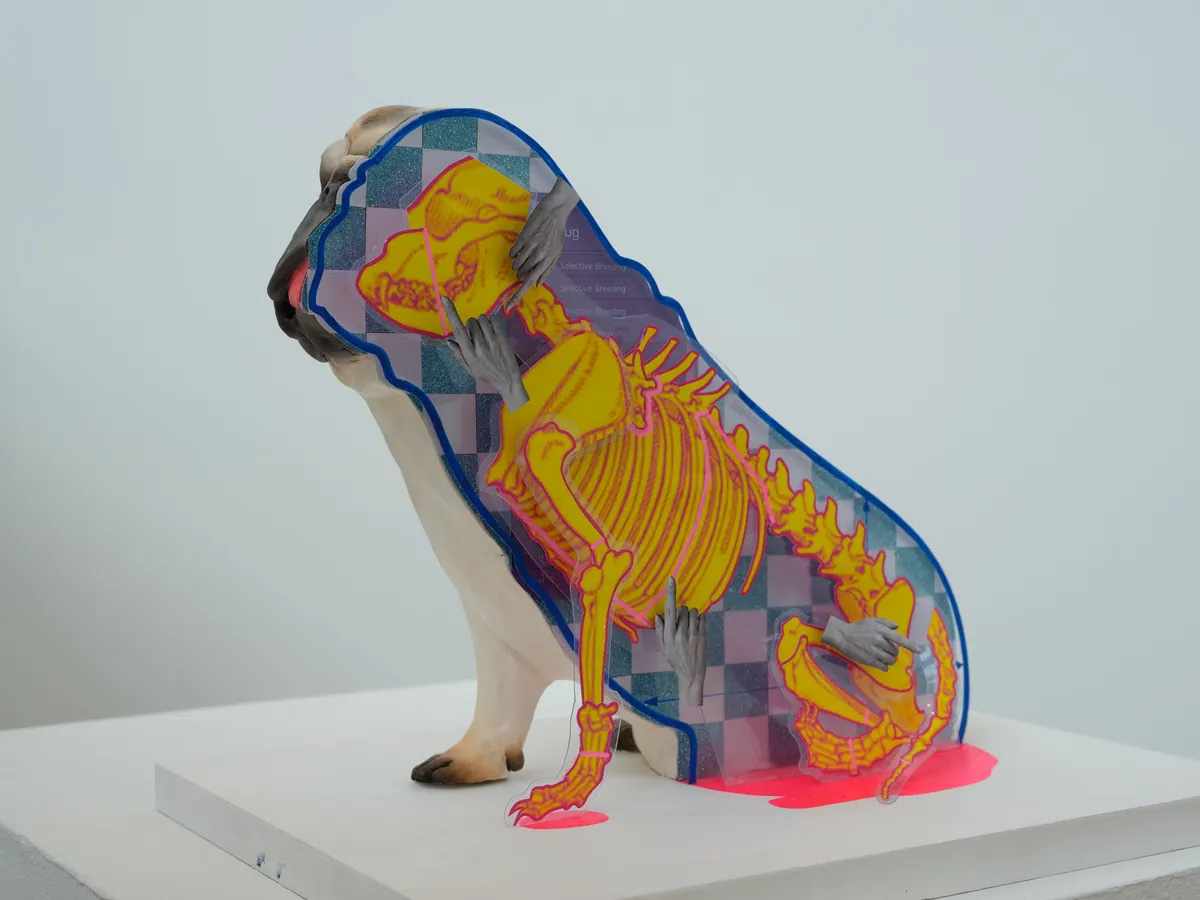
The Line
Mixed Media
In an era where the beauty of living beings comes from human intervention, where do we draw the line between natural and artificial? Half of the piece represents the normal appearance of a dog, whilst the other half signifies the human action in creating its features. The checkerboard pattern reflects the Photoshop background, symbolising human’s desire to manipulate appearances. A wolf’s skeleton was used to collage into the pug’s form, expressing how they deviated from their natural state.
Other Angle 1 Other Angle 2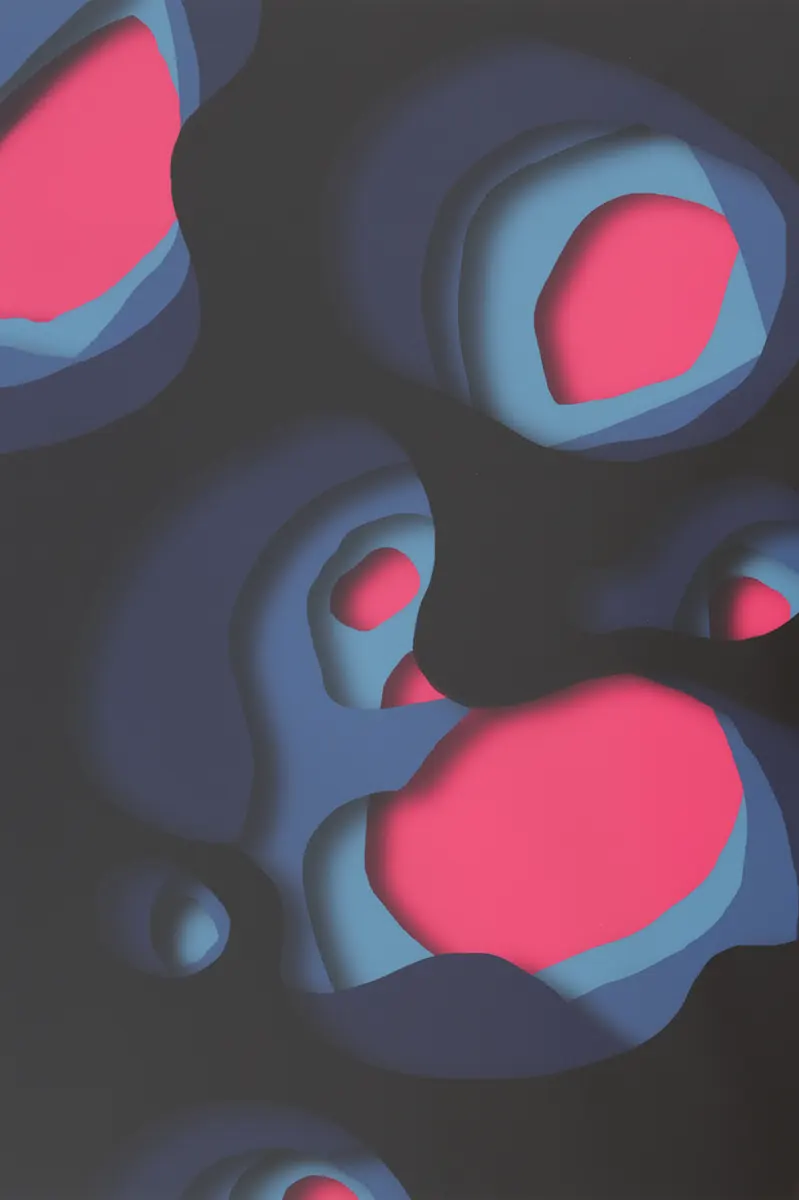
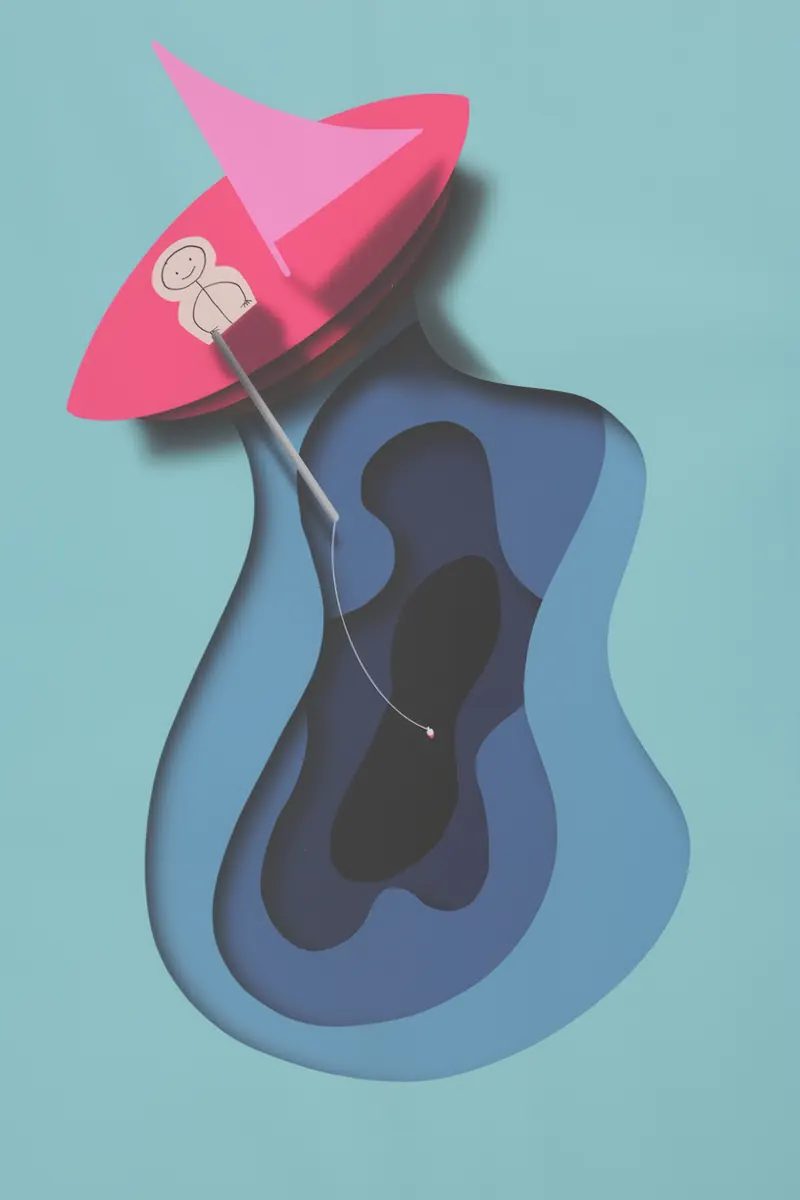
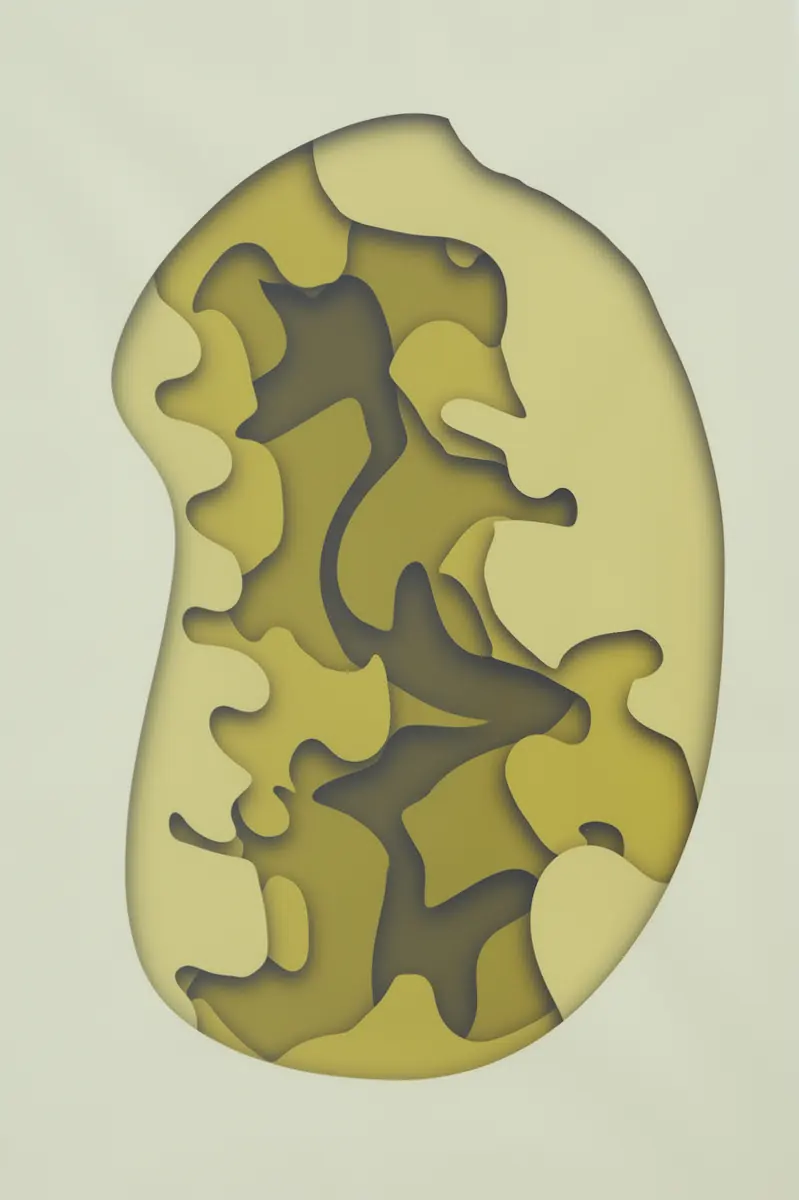
The Well
Digital Work
Creation is about making discoveries. The holes have multiple layers, each revealing a new colour, signifying each discovery leading to another discovery. The fishing rod juxtaposes with the absence of fish, suggesting the futility of the person’s waiting, reflecting that no discovery can be made by merely waiting for them. The piece purposely mimics the style of a paper cut-out despite being digitally made, reflecting the evolution of artistic medium, from paper to digital.
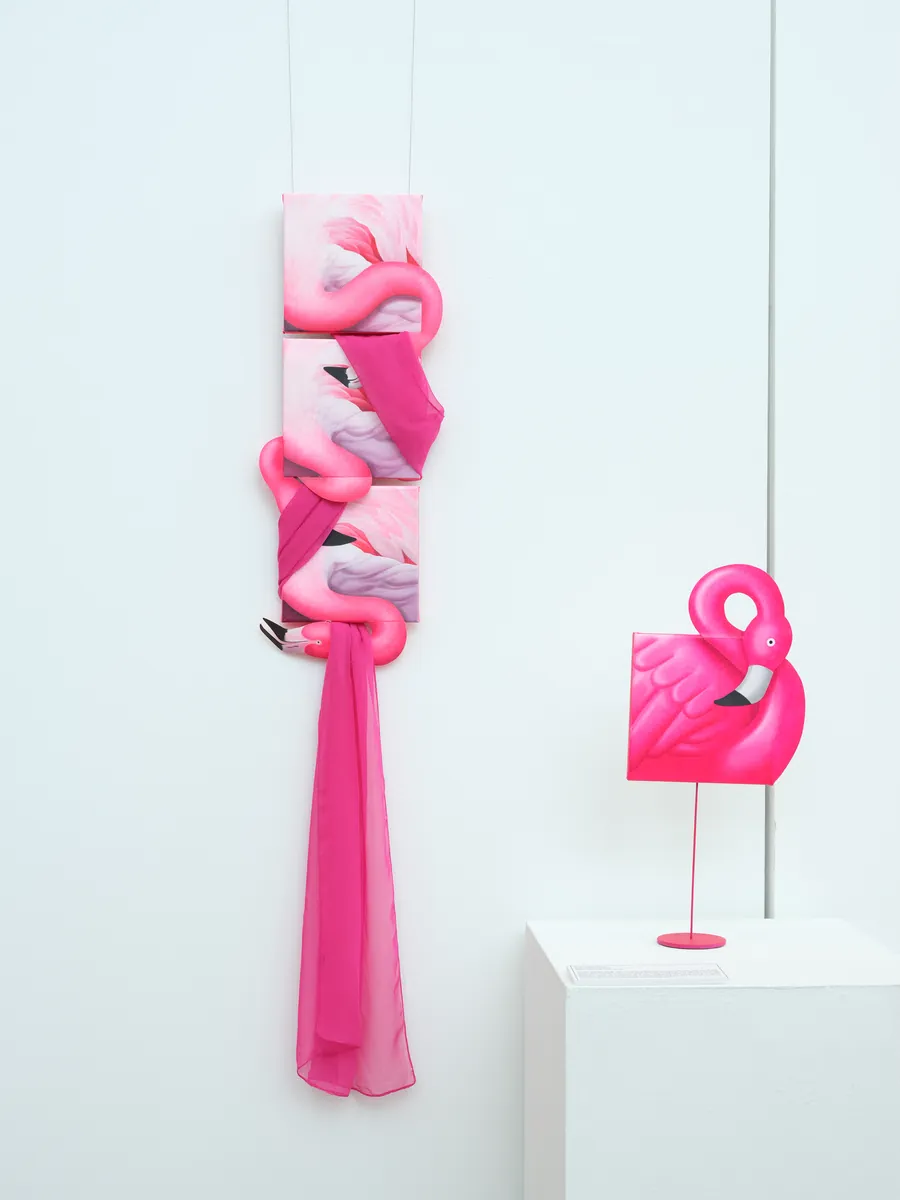
Pink Dependency
Mixed media with oil on canvas
We call artificial things ‘fake’ but they might be the sincerest beauties. The use of pink reflects that flamingos’ colour originated from the shrimp they eat, signifying the things that humans classify as beautiful often are simply a byproduct of other functions. The flamingos' necks are connected by a scarf, symbolising the codependency in nature. Meanwhile, the freestanding flamingo is deliberately separated from the scarf, expressing that artificial beauty can exist independently of other factors.
Other Angle
Molded
Mixed media
This artwork depicts the limitation of imitating nature when creating artificial products. The disfigured lemon sculptures signify that the product of imitation will still remain artificial that never reaches the original beauty. The use of translucent resin transforms the lemons into container-like forms, signifying the feeling of confinement. The colourful lights are surrounded by the lemon sculptures, symbolising that humans’ creativity is trapped within our own artificial inventions.
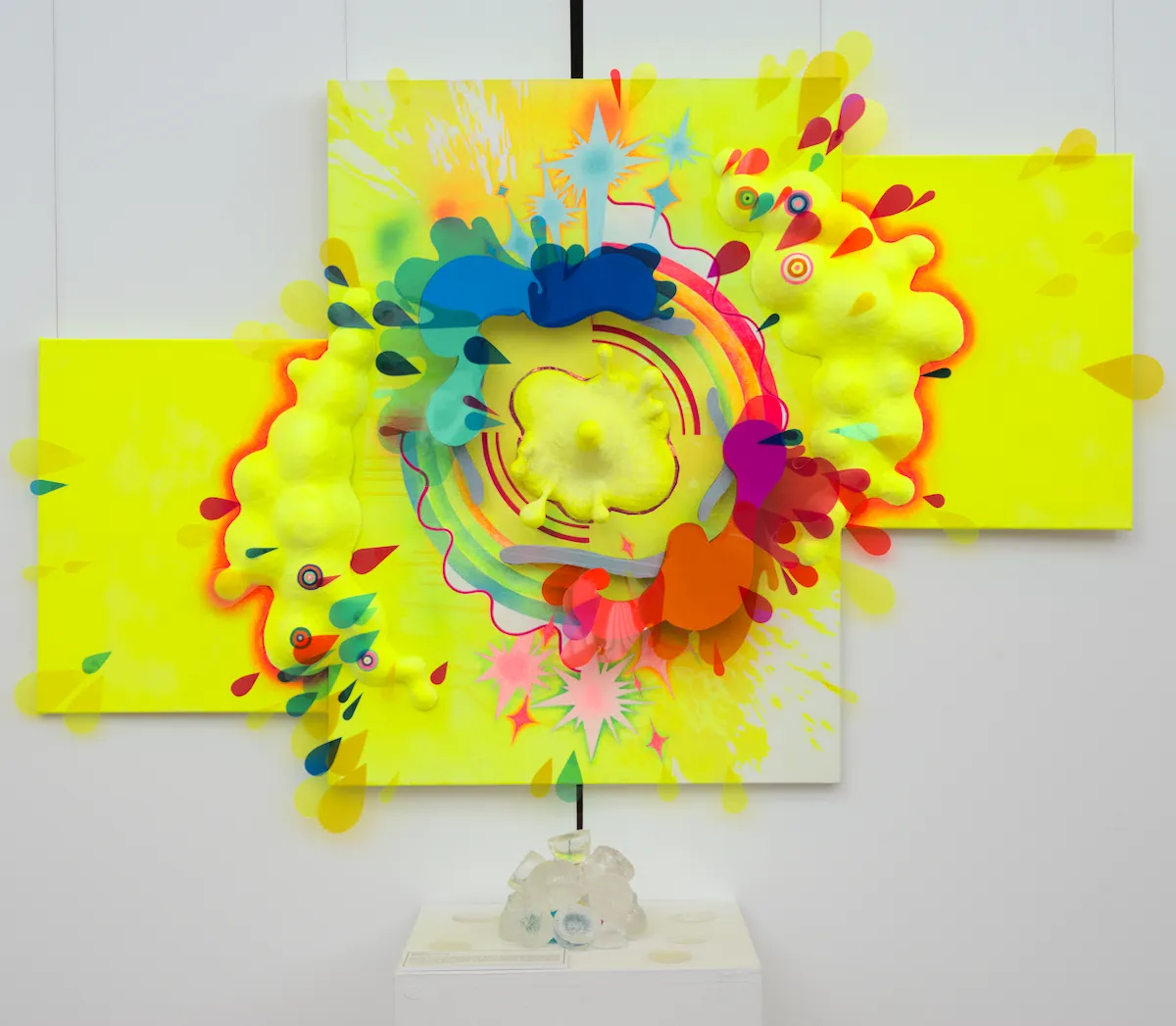
The Artificial Form
Mixed Media
True potential of artificial creations lies in exploring beauty beyond what is presented by nature. The use of neon colors emphasises the unnatural feeling that artificial products bring to their viewers. Waterdrop forms moving away from the center, signifying the momentum of an explosion. As the energy transfers outwards, these forms continue over the edges of the canvas, symbolising the wishful future where there are no more boundaries to human imagination and creations.
Other Angle
Harpies
Digital Work
This piece alludes to Greek mythology where Gods punish humans by transforming them into animals. The harpies are covered in blood, symbolising the death of humanity. The open wings signify the desire to search for freedom and not be confined within the limit of human physiology. The tranquil expressions reflect that despite the horrifying nature of body modifications, individuals would still choose to do so willingly as a form of self-expression.

5 Out of
pen and pencil on paper, digital edit
This artwork explores artificial beauty through a series of abstract visualisations. The paper calendar overlaps with the human hand, symbolising the flow of time and how it is manipulated by human actions. The open mouth appears next to the rating stars, signifying the origin of judgments. The repetition of the stars represents how people give ratings to products, reflecting how we enforce beauty standards that constantly change for the benefit of companies.
